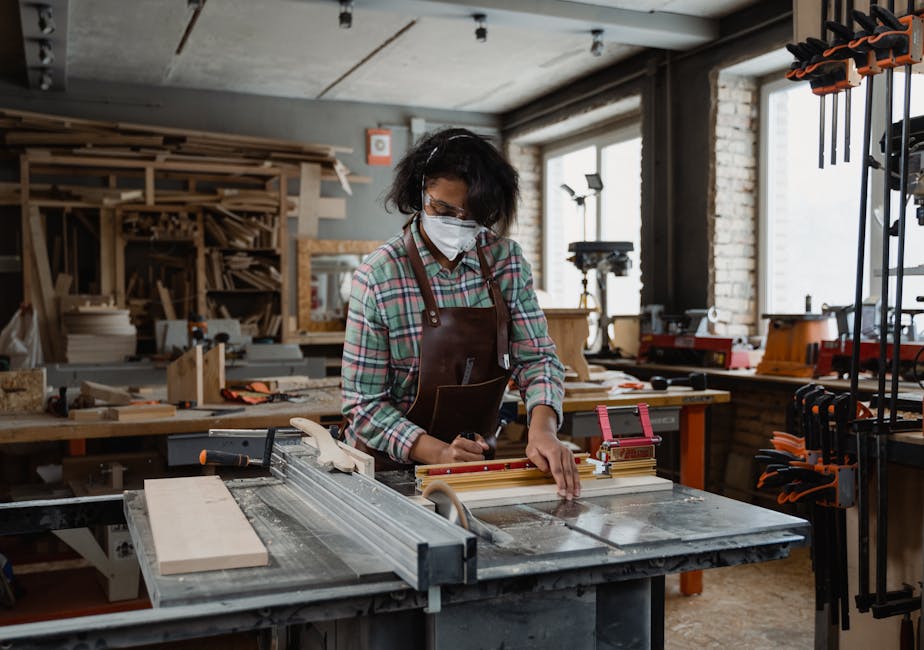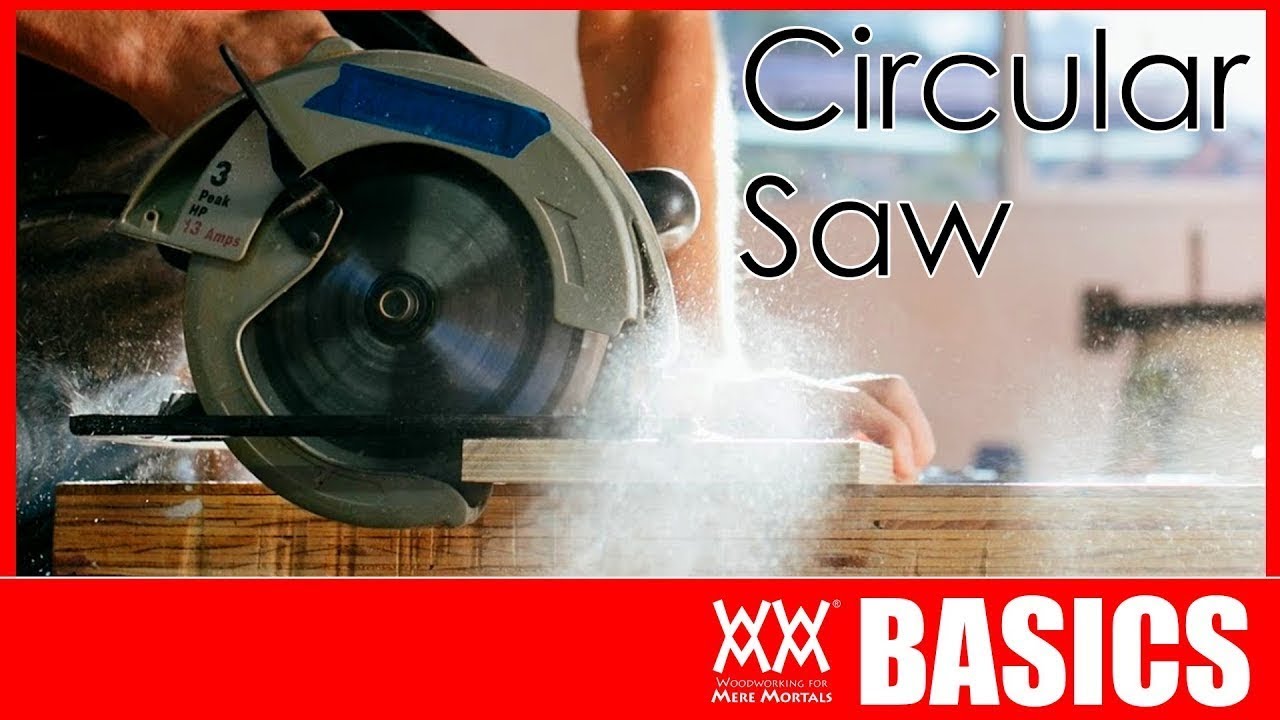Hey everybody! Before I get started I
wanted to let you know that I have relaunched the weekend woodworker course. This time the doors are open permanently. I really want to thank the thousands of
you who joined during the first two launches. All of your input really helped
us to tweak, refine and just improve the course and I'm really proud of this
completely polished final version. So if you're looking for a system to learn
woodworking from the ground up without a lot of space, a ton of money, or
years of experience, the weekend woodworker is the solution for you. Head
over to theweekendwoodworker.com to learn more and get started. Thanks. A circular saw is one of the most useful handheld power tools to own and I think
every shop should have one.
Plus it's a great tool for woodworking projects if
you don't have a table saw or if you just have a limited space, since it's a
portable tool, you can build projects anywhere. In your driveway, your patio, or
even on a balcony. A circular saw is similar to a table saw but instead of
feeding lumber through the saw, you pass the saw through a stationary board. Unlike a table saw though, it's safe to make freehand cuts with a circular saw.
Though you'll get straighter cuts if you use a fence or a guide. A circular saw
has two handles to help you control the saw with both hands. The rear handle has
the trigger that you'll hold throughout the cut.
Some saws have a safety button
that you need to press first to prevent accidental starts. Typically the blade is
to the right of the motor like this one but if you're a lefty you can also buy
left-handed saws. It will help you keep the blade to the left side of your body. But some right-handers actually prefer having the blade on the left side where
it's easier to see. It's just a personal preference. The base plate of the saw
rests flat against the surface of the wood and keeps the blade running at a
constant angle to the wood. Usually, of course, that's 90 degree angle. These two
saws have aluminum base plates which are lighter weight and less expensive but if
you plan to use the saw for more than just occasionally
get better results with a steel base like this one.
The base tilts for making
bevel cuts. This saw has engaged to set the angle you want Plus+ stops at 45 and
90 degrees as well as some others. By releasing this lever I can adjust the
saw up or down to make deeper or shallower cuts. All saws will have a
blade guard. It retracts automatically when you start cutting. Sometimes you
might need to manually retract it using this lever. You might occasionally need
that for making plunge cuts.
Sometimes I have to retract it just a little bit to
get it started when cutting really thin material or for some beveled cuts. But
for the most part just let it do its job on its own. The circular saws come in a
variety of sizes for all kinds of purposes. The most common size is the
seven and a quarter inch saw. Meaning it uses seven and a quarter inch blades and
this is the size I recommend for woodworking and other DIY projects
around the house. You can get battery-operated saws or corded ones
like these three. I've never owned the rechargeable kind but I hear they work
great if you don't have a lot of lumber to cut.
It's probably a lot easier to use
the cordless saw rather than messing around with an extension cord
but these corded saws are less expensive. A new circular saw will most likely come
equipped with a combination or all-purpose blade this one has 24 teeth
and I use it for almost everything. Usually it's all you'll need. If you're
experiencing splintering or rough edges when cross cutting or cutting plywood a
finer tooth crosscut or plywood blade up to 140 teeth might give you better
results. Every saw will have its own unique little system for changing blades
but they're all pretty similar just check with your owner's manual. Of course,
unplug the saw first. This rigid saw has a hex key that stores in the handle
so you don't have to hunt down a wrench when ever you want to change the blade. The saw will have some sort of a button or lever to lock the spindle in place. Press it down and hold it in place while you loosen
the nut or bolt. Remove the bolt and the flange or the washer and drop the blade
into place, making sure you have it facing the right way.

There'll be arrows
indicating the direction of the spin. The blade spins counterclockwise and cuts on
the upstroke. Of course another reminder is that it's usually safe to assume the
blade manufacturers want their logo to show on the outside. To get good cuts and
to prevent injury it's important that the wood you're cutting is held securely
in place. A sawhorse or a pair of saw horses is handy for this especially when
you're cutting boards or small pieces of plywood. Just clamp the workpiece in
place. It's best not to clamp down the offcut piece because the two halves
might collapse in on each other when you get to the end of the board.
This can
cause the saw to bind and even kick back and while kickback on a circular saw
isn't as dangerous as kickback on a table saw it can be very jarring and can
cause the saw to lunge toward your body. If your saw does bind or kickback
release the trigger and adjust the wood so that it's not pinching. But the
problem with not supporting the off cut piece is that its weight can cause the
wood to break or splinter as you get toward the end. And trying to support the
off cut with your opposite hand is awkward and probably not the best
solution. Instead I prefer to cut most pieces on the ground on top of a piece
of Styrofoam building insulation. This method provides offcut support giving
you a cleaner cut and eliminates kickback for larger pieces you don't
usually even need to clamp the wood down like a table saw, a circular saw really
can only make straight cuts. I recommend also owning a jigsaw for
making curved cuts.
Be sure to check out my jigsaw basics video for a lot more. First set the depth of your cut by adjusting the blade along the edge of
your board set it so that it's just barely deeper than the thickness of the
wood and lock it down. There's usually a scale that indicates the ideal setting
for whatever thickness of wood you're cutting. The easiest method for making
cuts is to freehand it. In other words, just draw a line where you want to make
the cut and follow along the line. This is handy for rough construction projects
and framing where the cuts aren't critical. Sometimes they use freehand
cuts for breaking down plywood into smaller more manageable size pieces that
I can square up and clean up on my table saw. To make a cut set the front of the
base plate flat against the wood surface. The base has two notches that tell you
exactly where the blade will cut. One is for regular 90-degree cuts and the other
is for bevels.
Make sure you're wearing eye protection and hearing protection,
and it's not a bad idea to wear a dust mask. Squeeze the trigger and start
feeding the saw into the wood. After the blade is spinning, position your body to
the side not directly behind the saw. Follow the line using that notch for
reference you can also look at the blade. From the side, the blade guard will
automatically spring back to it's closed position allowing you to safely set the
saw down while the blade is coming to a stop. To get straighter and more accurate
cuts you'll need to set up a guide of some sort for your base plate to ride
along. You can use anything for a straight edge including the factory cut
edge of a piece of plywood or even clamp a level to your workpiece. There's also a
lot of store-bought options as well as some homemade jigs.
I'll cover all of
these in an upcoming video for narrowish cuts you can use a guide like this one that rides along the edge of the plywood
for getting accurate cross cuts on board such as two-by-fours. The simplest method
is to use a speed square. Hook the cleat to the edge of your board and run the
saws baseplate alongside. I hope you found this video helpful. A circular saw is a
great tool to own whether you have a complete woodworking shop or want to
build cool projects without a shop. I used to make woodworking projects on the
roof of my apartment by dangling an extension cord down into the kitchen
window. The only saws I had were a jig saw and a
circular saw. If you enjoyed this video please give it a like
and subscribe to Woodworking for Mere Mortals. Thanks for watching everybody!.

